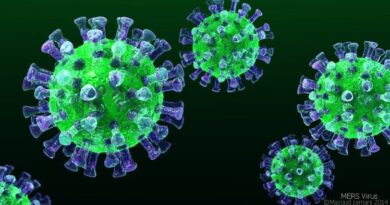Coronavirus lockdown leads to improved air quality
Air quality is picking up in countries that remain under coronavirus quarantine, experts say. But it is far too early to speak of long-term change.
Efforts to curb the spread of coronavirus pandemic have slashed economic activity and resulted in localised improvements in air quality, the World Meteorological Organization (WMO) has said.

The coronavirus pandemic is shutting down industrial activity and temporarily slashing air pollution levels around the world, satellite imagery from the European Space Agency shows.
One expert said the sudden shift represented the “largest scale experiment ever” in terms of the reduction of industrial emissions.
Readings from ESA’s Sentinel-5P satellite show that over the past six weeks, levels of nitrogen dioxide (NO2) over cities and industrial clusters in Asia and Europe were markedly lower than in the same period last year.
However, it is too early to assess the implications for concentrations of greenhouse gases that are responsible for long-term climate change. That is because carbon dioxide levels at key observing stations have so far this year been higher than the previous one.
In its statement, the WMO stressed that any cuts in emissions as a result of the economic crisis triggered by the pandemic are not a substitute for concerted climate action.
Nitrogen dioxide is produced from car engines, power plants and other industrial processes and is thought to exacerbate respiratory illnesses such as asthma.
While not a greenhouse gas itself, the pollutant originates from the same activities and industrial sectors that are responsible for a large share of the world’s carbon emissions and that drive global heating.
According to an analysis carried out for Carbon Brief, the lockdown and reduction in economic activity in China led to an estimated 25 percent reduction in carbon dioxide (CO2) emissions in the space of four weeks.
The February monthly average of atmospheric CO2 at Mauna Loa observatory in Hawaii was 414.11 parts per million, compared to 411.75 ppm in February 2019, according to the US National Oceanic and Atmospheric Administration.
The World Health Organization describes NO2 as “a toxic gas which causes significant inflammation of the airways” at concentrations above 200 micrograms per cubic metre. Pollution particles may also be a vector for pathogens, as well as exacerbating existing health problems. The WHO is now investigating whether airborne pollution particles may be a vector that spreads Covid-19 and makes it more virulent.
One of the largest drops in pollution levels could be seen over the city of Wuhan, in central China, which was put under a strict lockdown in late January. The city of 11 million people serves as a major transportation hub and is home to hundreds of factories supplying car parts and other hardware to global supply chains. According to Nasa, nitrogen dioxide levels across eastern and central China have been 10-30% lower than normal.

About a quarter of the total emissions is absorbed by the oceans. Another quarter is absorbed by the land biosphere – including forests and vegetation which act as carbon “sinks”.
Naturally, the land biosphere takes up a similar amount of CO2 than it releases over the year in a seasonal cycle. Therefore, global average CO2 levels generally increase until April/May.
Observations have shown that nitrogen dioxide (NO2) levels are significantly reduced during the lockdown in both hard-hit China and Italy.
In Italy, a gradual reduction trend of about 10 percent a week over the past four to five weeks has been confirmed by surface observations from the European Union’s Copernicus Atmospheric Monitoring Service.
India: Air quality immediately improves under coronavirus lockdown
The national capital recorded a dip in pollution levels on Monday, as a large number of vehicles remained off the roads due to a lockdown imposed by the city government to contain the spread of the coronavirus.
According to the Central Pollution Control Board (CPCB) data, the city’s overall air quality index at 9 am stood at 112, which falls in the ‘moderate’ category. As a result, skyscrapers usually shrouded in smog were visible and some residents reported spotting more stars than usual. Employees of private companies and non-essential government services have been asked to work from home in view of the coronavirus outbreak.
Some research also links air pollution to an increased risk of respiratory virus infections — which include COVID-19, the disease caused by the coronavirus.




